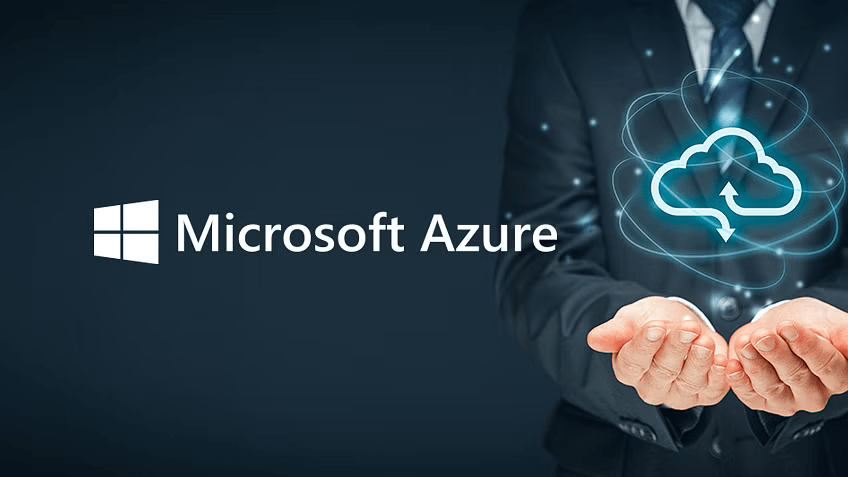An Introduction to Azure Active Directory (AAD)
 Justus Dahunsi
Justus Dahunsi
Introduction
Effective identity and access management (IAM) is critical for guaranteeing the security and efficiency of enterprises and organizations in today's linked world when cloud computing and remote work are increasingly the standards. Microsoft Azure Active Directory (AAD) is a robust cloud-based identity and access management service. In this post, we will look at Azure Active Directory's core features and benefits, as well as its role in modernizing identity and security management.
1.1 What is Azure Active Directory?
Azure Active Directory (AAD) is a complete cloud-based identity and access management solution that enables enterprises to manage and authenticate users, devices, and applications securely across cloud and on-premises environments. It is the foundation of Microsoft's cloud services, enabling a single identity platform for users to access diverse apps and resources both on-premises and in the cloud.
2.0 Key Features of Azure Active Directory
2.1 Single Sign-On (SSO)
AAD's Single Sign-On functionality is one of its most important features. Users can sign in with their AAD credentials once and access numerous applications and services without having to re-enter their login information. SSO increases user productivity and simplifies the authentication process, while also increasing security by lowering the amount of credentials that users must manage.
2.2 MFA (Multi-Factor Authentication)
MFA offers an extra layer of protection by asking users to authenticate themselves using two or more methods. Something they know (password), something they have (mobile phone or security token), or something they are (biometrics) can be included. MFA decreases the danger of unwanted access while protecting sensitive data and resources.
2.3. Application Administration
Administrators can use AAD to manage and safeguard access to multiple cloud and on-premises apps. It is compatible with a wide range of applications, including Microsoft 365 services, custom-built apps, and thousands of pre-integrated third-party apps available through the Azure AD Application Gallery.
2.4. Device Administration
Businesses can use Azure AD to manage and safeguard devices that use their resources. Enabling conditional access controls, which restrict access based on specified criteria such as device compliance, location, and user identity, is one example. Device management and registration are available for both Windows and non-Windows devices.
2.5. Collaboration between B2B and B2C
AAD offers secure engagement with both external partners and clients (B2B and B2C). External users can be invited to access specific resources and apps without the requirement for separate accounts. This provides partners with regulated access while preserving security and compliance.
2.6 RBAC (Role-Based Access Control)
Organizations can use RBAC to design and assign roles to users based on their responsibilities. These roles govern what resources and apps users have access to. RBAC promotes the principle of least privilege by limiting access rights to what is required for each user's job function.
3.0 Advantages of Azure Active Directory
3.1. Increased Security
AAD dramatically improves an organization's security posture by employing advanced security features like MFA, conditional access, and RBAC. It aids in the prevention of identity-based attacks and unlawful access to sensitive data.
3.2. IT Management Simplified
AAD simplifies user and device management, relieving IT teams of administrative duties. The provisioning and de-provisioning of user accounts and access privileges are made easier by centralized control and automation solutions.
3.3. Better User Experience
AAD's seamless SSO experience boosts user productivity by allowing users to access all of their applications and resources with a single set of credentials.
3.4 Scalability and Adaptability
Azure Active Directory is extremely scalable and can support businesses of all sizes, from small startups to huge corporations. Its adaptable architecture enables enterprises to link it with existing on-premises directories, smoothing the transition to the cloud.
Conclusion
Azure Active Directory is a crucial tool for modern identity and access management and a critical component of Microsoft's cloud ecosystem. Its powerful features, like Single Sign-On, Multi-Factor Authentication, application and device management, and collaboration capabilities, make it a must-have for enterprises looking to improve security, improve user experience, and streamline IT management. Organizations can create a solid foundation for their cloud journey by implementing Azure AD, while also protecting the security, integrity, and availability of their digital assets.
Subscribe to my newsletter
Read articles from Justus Dahunsi directly inside your inbox. Subscribe to the newsletter, and don't miss out.
Written by

Justus Dahunsi
Justus Dahunsi
I'm a versatile DevOps engineer with a love for Quality. Proficient in a wide range of tools and technologies. Possesses a results-driven attitude that is supported by practical experience driving the development and support of AWS systems and in-depth knowledge of Azure services. Experienced in managing and optimizing key components of the DevOps ecosystem, such as version control systems like Git (GitHub, BitBucket), continuous integration and deployment pipelines (GitHub Actions, Jenkins, AWS CodePipeline), and container orchestration platforms (AWS EKS, AWS ECS, Kubernetes). Skilled in configuring and deploying various web servers (Nginx, Apache) and leveraging infrastructure-as-code tools like Terraform and CloudFormation for streamlined deployments. Proficient in working with databases including MongoDB, MySQL, and DynamoDB, ensuring data integrity and high availability. Skilled in Agile SCRUM and Scrum development methodologies, collaborating effectively with cross-functional teams to deliver high-quality software solutions. Strong problem-solving and analytical skills, with a focus on continuous improvement and automation to optimize workflows and increase efficiency. Overall, a dedicated and results-driven DevOps engineer with a deep understanding of software development lifecycles and a passion for creating robust and scalable infrastructure solutions. Ready to contribute expertise, leadership, and technical excellence to drive successful project outcomes. One thing that makes me stand out is not just my attention to detail, and also my view that whatever is seen as the best can always be better. I'm a lover of tech and that has influenced me so much that I try to explore areas that help me to see beyond the present scene. The fact that Technology is so diverse and evolving, allows me to see opportunity in every situation. For Instance, imagining how technology will influence the world in the next 15 to 25 years now determines my approach to doing things now. Although never stop learning and Innovating, technology is often the solution to problems in this modern world. With my knowledge and experience, I've been able to understand that "Impossibilities are Possibilities that have not yet been explored".
